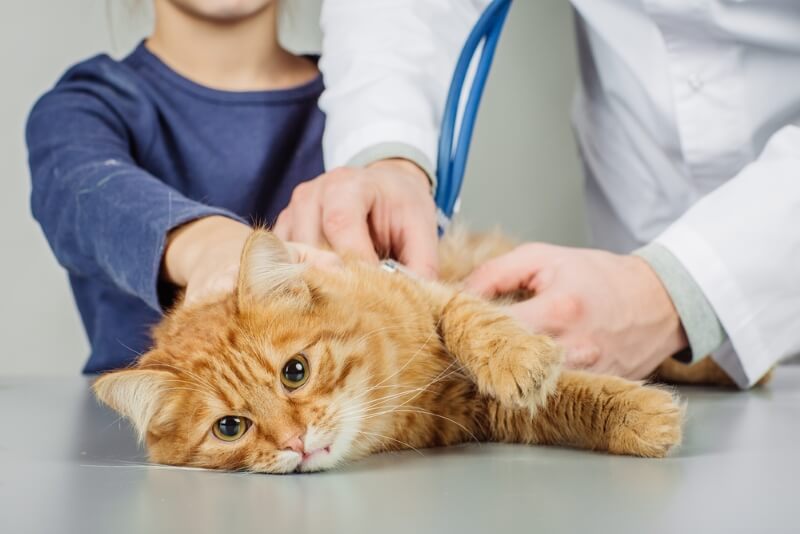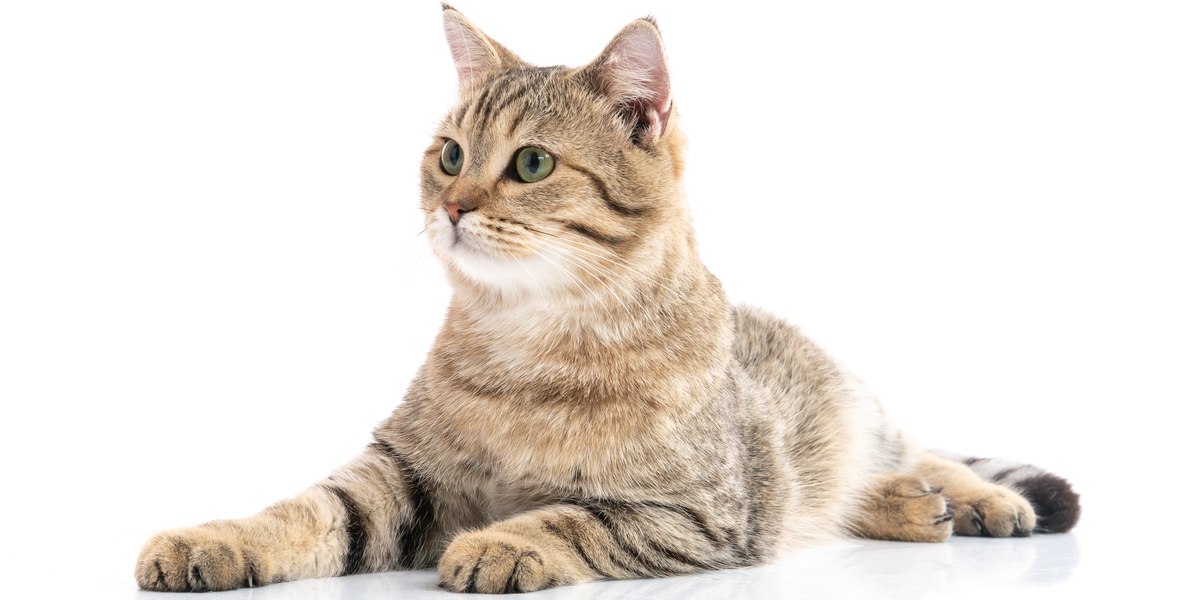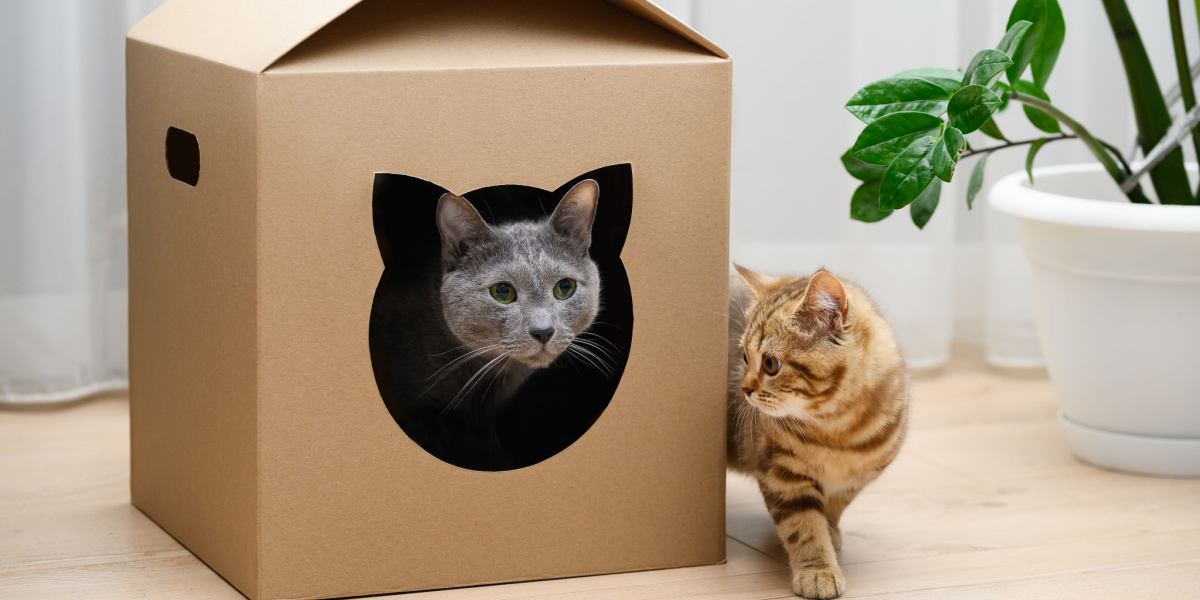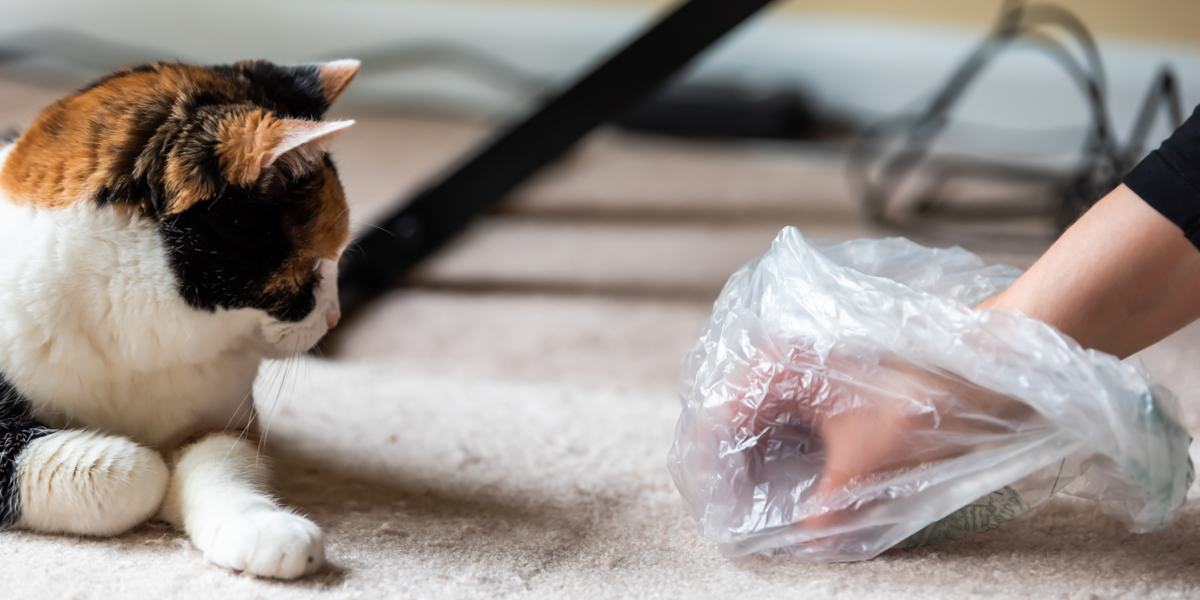Blood In Cat Stool: What To Do If You See Blood In Your Cat’s Stool?
This page contains affiliate links. We may earn money or products from the companies mentioned in this post through our independently chosen links, which earn us a commission. Learn More

With feces a key indicator of a cat’s health status, blood is one of the most startling things you’ll spot in the litter box. Blood in cat stool has an almost endless list of causes, ranging from worms to poisoning to a foreign object in the GI tract.
While this article can’t tell you whether or not you should worry about the blood in your cat’s stool, it will help you to understand what bloody stool means and how to handle it.
You’ll learn about the causes of blood in the stool, what the different colors of blood indicate, and what to do if you notice blood in your cat’s feces.
Firstly, What Should You Do If You See Blood In Your Cat’s Stool?
It’s always a serious problem when blood is seen in the feces. The barrier between the outside and the inside of the body has been compromised, allowing bacterial infection to enter the body via the GI tract, with potentially serious consequences.
This is one of the reasons why cats always need to be taken to the vet when blood (fresh or digested) is seen in their stools.
Yes, the cause may be a simple problem (e.g. roundworms) but it’s safer to have a vet check that your pet’s life is not at risk in any way.
What Causes A Cat To Have Blood In Their Stool?
There are many possible causes of blood in the feces, whether from the lower digestive tract (fresh) or the upper digestive tract (digested). Regardless of the cause, the same basic principle is involved: the lining of the digestive tract, including blood vessels, has been damaged.
Blood is designed to stay inside blood vessels. By definition, bleeding occurs when blood escapes from those blood vessels. So when blood is seen in the feces, this means that the blood vessels lining the digestive tract have been disrupted in some way.
The bleeding may stem from many causes, including inflammatory bowel disease (IBD), foreign bodies, viral or bacterial infections, intestinal parasites, poisons, and even cancer.
How Do You Know Why Your Cat Has Blood In Their Stool?
If your cat has blood in their stool, you should bring them to the veterinarian immediately. After a full and detailed clinical examination, your veterinarian will help you to identify the specific cause of the blood in your cat’s stool.
Before And After You Go To The Veterinarian, Pay Attention To The Color Of The Blood In Your Cat’s Stool.
There are two factors to address when identifying the cause of blood in the stool. The first is identifying where the bleeding started.
The color of the blood in the feces is a crucial indicator of that location. Blood from the rear end is not always bright red when it comes out. The color depends on the site of bleeding into the digestive tract.
The closer to the mouth that the bleeding takes place, the more the blood is digested as it passes towards the rear end.
As blood is digested, its red color takes on more of a brown or black appearance. So the precise color of a bloody stool helps to identify the location of the problem.
Remember that the digestive tract is divided into five main areas:
- Esophagus
- Stomach
- Small intestines
- Large intestines
- Back passage and anus
From the esophagus to the rectum, bleeding may originate from various sites along the digestive tract.
Here’s how the color of the blood can tell you and your veterinarian about its origins in the digestive tract.
- If there is active bleeding from the large intestines or the back passage, the bowel movements are likely to have streaks which are the same red color as fresh blood. This is known as hematochezia.
- If, however, the bleeding is from the stomach or small intestines, then while it will be red at the point of bleeding, the fresh blood is digested as it passes through the intestinal tract, so that by the time it emerges from the rear end, it’s dark brown or even black. Sometimes the word “tarry” is used to describe its dark, slimy appearance. The original red color may be present to some extent, but it may only be noticeable as the droppings are cleaned up. If there’s a significant amount of digested blood, there’s often a distinctive strong smell too. When there is this type of digested dark blood in the feces, it’s known as melena.
Is Darker Blood Indicative Of More Serious Issues?
The colour of the blood in the stools simply represents the location of the source of the blood, so it’s neither “good” nor “bad”. However, it’s true that the more blood present, the more serious is the problem, whether it’s bright red, dark brown or black.
What Difference Does The Color Of The Blood Make In Practical Terms?
The color of any blood in the stools is not as significant as a cat carer may think: a small amount of dark blood can be identical to a small amount of fresh bright red blood in terms of the impact on the cat. Equally, a large amount of dark blood is serious, but no more serious than a large amount of bright red blood: both require urgent veterinary assistance. For the sake of helping your vet make a diagnosis, you should take photographs of any blood that you see, and also retain a sample of the feces so that you can give this to the vet.
Is It Worse If Blood Is Accompanied By Diarrhea Rather Than Normal Feces?
Diarrhea is caused by irritation of the intestines, and as discussed above, blood in the feces is caused by the same issue. For this reason, it’s common for blood to be accompanied by diarrhea. There are exceptions to this: sometimes a localised source of bleeding can lead to blood in normal, solid feces.
In general, it’s more serious when there is bloody diarrhea: this suggests more widespread inflammation in the digestive tract compared to blood in normal feces. However, both situations require urgent veterinary help.
What If There Is Mucus In The Stools As Well?
A small amount of mucus is normally produced in a healthy cat, to lubricate the passage of feces, visible only as a slight sheen coating the feces. Inflammation of the intestines can cause increased production of mucus, so that this is sometimes seen as streaks of saliva-type, stringy, clear or white material mixed with the feces. This is just another indicator of irritation and inflammation of the digestive tract, so it may be seen at the same time as blood. If you see this, take a photograph to show your vet and this will help to add to the clinical picture when making a diagnosis.
While there’s an almost endless list of reasons why your cat might have blood in the stool, severe gastroenteritis is the most common cause.
The most common cause of bleeding from the digestive tract is severe gastroenteritis, which means inflammation of the stomach and intestines.
Typically, dietary indiscretion is a cause: a cat might eat something unsavory or irritating. If the lining of the stomach is irritated, the cat may vomit immediately. If the substance passes beyond the stomach, it’s intestines that are irritated, and diarrhea follows.
Irritation of both the stomach and intestines is likely to cause vomiting and diarrhea. Often, a loose stool accompanies blood.
If you could see the lining of the stomach and intestines in mild cases of vomiting and diarrhea, it would look red and sore. Mild inflammation like this soon resolves with simple treatment such as fasting and a bland diet.
It’s different when there is severe irritation of the stomach and intestines. Instead of just becoming red and sore, the surface of these areas starts to ooze blood, and that’s why blood is then seen in the feces.
Treatment Depends On The Severity Of The Problem.
Antibiotics may be prescribed, and intravenous fluids may need to be given to deal with the serious dehydration that often accompanies this level of gastrointestinal irritation. Special bland cat food may be prescribed.
This is easier to digest than regular cat food, so it’s better when there are signs of digestive irritation.
Fewer inflammatory byproducts are produced as it is digested, so this type of diet helps any irritation settle down more quickly. Probiotics are often also included in this type of dietary treatment.
More detailed investigations are sometimes needed.
Sometimes a simple type of treatment may be given without further detailed work-ups. This can be fine as long as the patient responds well.
In other cases, a more detailed investigation is needed, including x-rays, ultrasound, full blood work including a blood count, and perhaps even more expensive diagnostic imaging such as CT and MRI scans.
The full clinical picture is important when deciding how much investigation is needed.
Are there other signs, such as weight loss, pale gums, or abdominal masses on palpation?
A stool sample may be taken to check for intestinal parasites, coccidia, as well as bacterial or viral infections. Sometimes a culture may be carried out.
In cases where the problem resolves, then comes back again, investigations such as intestinal biopsies may be suggested: inflammatory bowel disease (IBD), perhaps due to food allergy, is common, and cancer may be on the list of possible causes. A biopsy is the definitive way to make these diagnoses.
The cat’s medical history is important when deciding what to do, and older cats are prone to different conditions compared to younger cats, so the workup may vary accordingly.
When the blood appears a brighter red color, the focus of an investigation moves towards the areas closest to the cat’s anus. This includes exploration of the lower intestines, such as checking the rectum for damage (endoscopy may be used to search for rectal polyps) as well as a physical examination to check the cat’s anal sacs or anal glands.
The Outcome Depends On The Cause.
Many cases of one-off episodes of blood in cat stool settle down with simple treatment, without the primary cause being identified.
In more serious cases, or when the problem recurs, a precise diagnosis is essential. It’s only possible to give appropriate treatment and to work out an accurate prognosis once this diagnosis has been made.
Whatever you do, never ignore blood in your cat’s stool. Early intervention is always the safest option.








